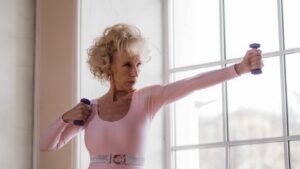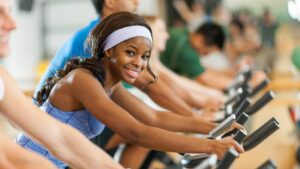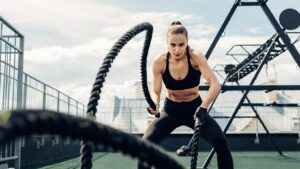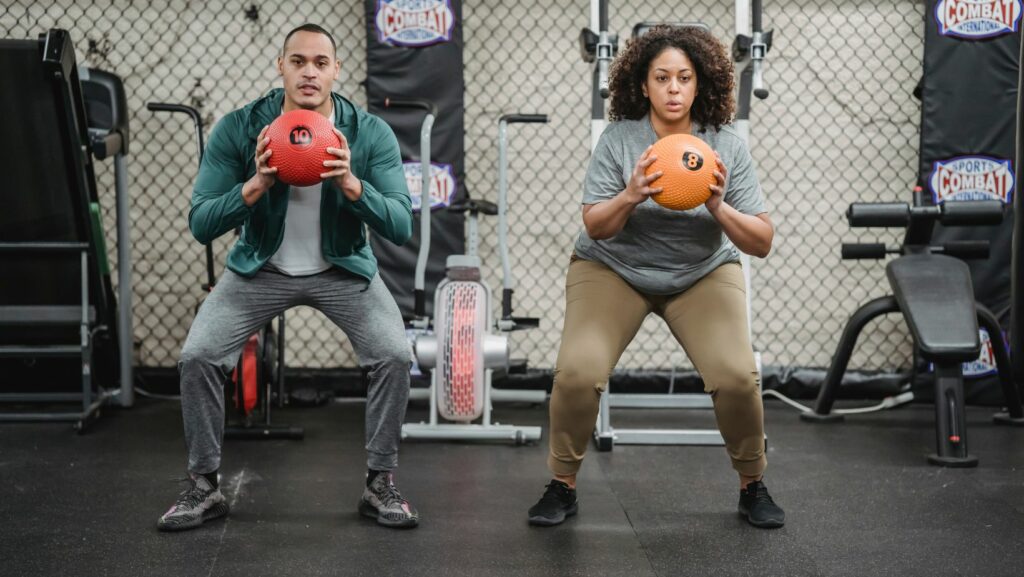Step into the dynamic world of fashion fitness modeling, where style meets strength and passion meets perseverance. This vibrant niche combines the allure of the fashion industry with the vigor of physical fitness, creating a unique blend that’s captivating audiences worldwide.
It’s not just about looking good in designer wear, but also about showcasing the beauty of a healthy, active lifestyle. From fitness apparel shoots to runway shows, these models are redefining standards and inspiring many to embrace fitness. Stay tuned as we delve into the fascinating realm of fashion fitness modeling, a world where aesthetics and athleticism coexist seamlessly.
Fashion Fitness Modeling
 Fashion fitness modeling acts as a nexus, merging fitness and style to portray an appealing fusion. Usually, these models are the showstoppers, not merely basking in the spotlight in fashionable costumes, but also embodying the attractiveness of an energetic, healthy lifestyle. In various roles, from fitness garment photoshoots to catwalk displays, they’re altering norms and motivating others to incorporate fitness into their own lives. The definition of fashion fitness modeling thus extends to the exhilarating space where grace and athleticism blend in balanced harmony.
Fashion fitness modeling acts as a nexus, merging fitness and style to portray an appealing fusion. Usually, these models are the showstoppers, not merely basking in the spotlight in fashionable costumes, but also embodying the attractiveness of an energetic, healthy lifestyle. In various roles, from fitness garment photoshoots to catwalk displays, they’re altering norms and motivating others to incorporate fitness into their own lives. The definition of fashion fitness modeling thus extends to the exhilarating space where grace and athleticism blend in balanced harmony.
Embarking on a journey as a fashion fitness model necessitates certain essential qualities. Firstly, a high degree of fitness is paramount. Unlike traditional models, fashion fitness models must sport toned, well-conditioned bodies. Regular workouts and a healthy diet plan become crucial components of their routine.
Secondly, aesthetic appeal garners equal importance. These models are, after all, in the fashion industry. Hence, a clear skin, good hair, and an overall good-looking appearance serve as key attributes.
Lastly, determination and discipline sit at the crux of this profession. Balancing both fashion commitments and rigorous fitness regimes demands an unwavering focus and a disciplined lifestyle. Fashion fitness models need to maintain not just a dipping weight scale but muscle mass and stamina, ensuring they’re ready for all types of modeling assignments. Thus, the crux of seizing success in this field stems from combining style, strength, and tenacity.
The Intersection of Fashion and Fitness
 In contemporary fashion, a notable trend emerges, namely, athleisure. This fusion of sportswear and regular attire blends comfort and functionality with style, giving rise to a new fashion genre. Athleisure posits a practical approach towards fashion, focusing on comfort, yet it does not compromise on the style quotient. Examples include high-performance leggings, sweatshirts, or tank tops that exude an athletic appeal and can be worn outside the gym.
In contemporary fashion, a notable trend emerges, namely, athleisure. This fusion of sportswear and regular attire blends comfort and functionality with style, giving rise to a new fashion genre. Athleisure posits a practical approach towards fashion, focusing on comfort, yet it does not compromise on the style quotient. Examples include high-performance leggings, sweatshirts, or tank tops that exude an athletic appeal and can be worn outside the gym.
Apart from adding versatility to everyday wardrobes, this trend underscores the inclusion of fitness into mainstream culture. Here, comfort meets style, keeping in line with the rapidly evolving expectations of consumers who seek to integrate fitness into their daily lives. It’s evident that athleisure revolutionizes not just the clothing industry but magnifies the prominence of health and fitness in society.
Prominent Brands and Collaborations
Major brands harness the growing traction in the sphere of fashion fitness modeling. Companies like Nike, Under Armour, and Puma bring forth collaborations with renowned models to underscore their commitment towards active lifestyle fashion. For instance, Nike’s partnership with professional tennis player Serena Williams yielded an exclusive range of athletic wear, merging the exuberant style of streetwear with the functionality of sportswear.
Training and Nutrition for Fashion Fitness Models
 Upskilling one’s physique and maintaining a desired fashion fitness physique requires rigorous training and a moderate diet. To better understand this paradigm, let’s delve deeper into the workout routines fashion fitness models follow, and the type of nutrition they adhere to.
Upskilling one’s physique and maintaining a desired fashion fitness physique requires rigorous training and a moderate diet. To better understand this paradigm, let’s delve deeper into the workout routines fashion fitness models follow, and the type of nutrition they adhere to.
Fashion fitness models typically engage in regular, comprehensive workout regimens. These often comprise a mixture of cardio exercises, strength training, and flexibility workouts. For instance, endurance activities such as running, cycling, and swimming can help increase the heart rate, thus burning calories and improving overall cardiovascular health. Additionally, strength training exercises, for example, weight lifting or resistance training, can build lean muscle mass and boost metabolism.
Models also incorporate flexibility-enhancing exercises into their routine. These can include yoga and Pilates, which can enhance balance, improve muscle strength and tone, and increase joint flexibility.

